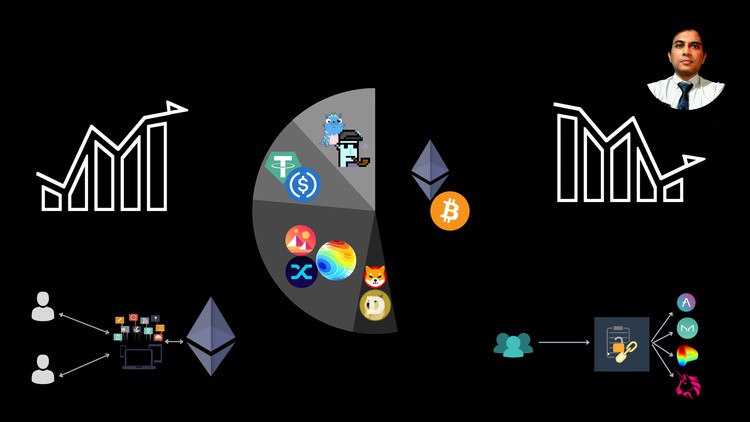
Creating Long-term Portfolios with Crypto-Assets + Portfolio Optimization using Python
What you will learn
Classification of Crypto-Assets from an asset-allocation perspective
Different Blockchain-based business models and how crypto-assets create value.
Basics of Asset Allocation and Portfolio Management
Portfolio Optimization with Python + Downloadable Code
Description
Note 1: This is not a tutorial on how to invest in crypto-assets, does not contain a tutorial on account creation on crypto-exchanges or wallets. This is an intermediate-level course on Investment Analysis and Portfolio Management with Crypto-Assets. Some basic understanding of finance and investment concepts is required for this course.
Note 2: The link to the Python-based Portfolio Optimizer is with lectures 47-49.
The legal structure for crypto-assets is slowly taking shape and more and more people are entering the crypto ecosystem.
As per a Chainanalysis report, crypto adoption among retail inventors grew by 881% in 2021. Adapting to this trend, many companies launched pooled investment products. It seems that the crypto ecosystem is gaining maturity. Although we need to keep in mind that the market capitalization of all crypto-assets (~2 trillion USD as of February 2021) is still very very small compared to the global equity markets ($122 trillion USD as of Q2 of 2021) and Global Bond Markets ($128 trillion USD as of August 2021).
There is a lot of headroom for growth for crypto-assets as an investment option.
While crypto-assets are slowly being accepted as a viable investment option, it is still very hype-driven and speculative. This means investing in crypto assets can be stressful and may take a lot of your attention. The solution is creating a long-term portfolio for crypto assets that are well balanced and optimized for the risk appetite of an investor. But to do that we have to learn about crypto- asset types from an asset allocation perspective, blockchain-based business models, and the mechanism of portfolio creation.
This course will help you understand these concepts and also will show you a sample portfolio optimization using python.
Content